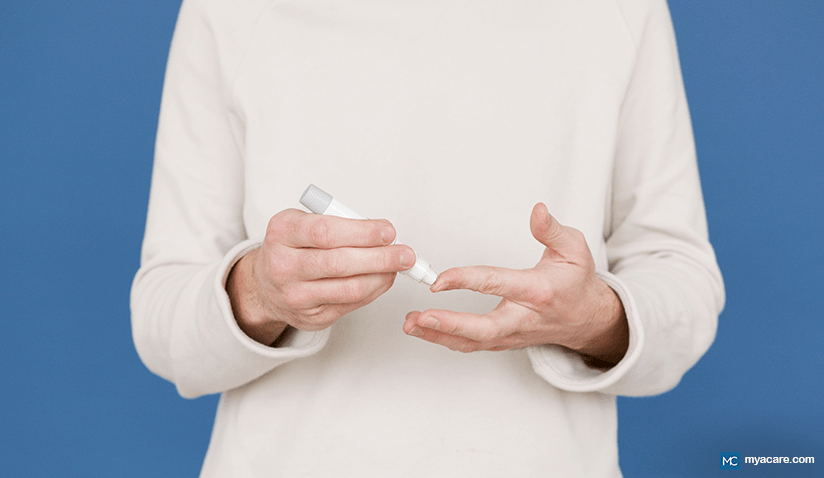WHAT IS DIABETES?

Diabetes is a serious health problem worldwide. The International Diabetes Federation (IDF) estimates that diabetes currently affects over 425 million people, with this number expected to rise to over 600 million by 2045. Currently, this non-communicable disease is one of the top 10 causes of death according to the World health Organization (WHO).
Diabetes is the name given to a group of metabolic diseases characterized by high levels of blood glucose (hyperglycemia) caused by problems with insulin (a hormone produced in the pancreas) secretion or with some defect in the way insulin interacts with different tissues in the body. Several different mechanisms are associated with these diseases and many factors contribute to their prevalence; however, right now there are still many unanswered questions about how they develop initially.
In general, symptoms include: excessive urination, thirst, constant hunger, weight loss, visual problems and tiredness. In some cases, these symptoms can appear suddenly rather than gradually.
Diabetes eventually leads to a lot of severe health consequences like renal deficiency, blindness, higher risk of cardiovascular problems, increased risk of lesions and infection in lower limbs which can ultimately lead to amputation, organ damage, etc.
At the moment, there are 3 categories related to Diabetes. While most people have heard of Type 1 and Type 2 Diabetes, there is also third category known as pre-diabetes.
Type 1 Diabetes (T1D)
Also called insulin-dependent or juvenile Diabetes, this particular form of the disease is characterized by either complete or nearly complete insulin deficiency caused by the death of β-cells, the ones responsible of insulin production and secretion in the pancreas. Patients with T1D need insulin injections to survive.
5 to 10% of diabetics suffer from a particular sub-type of T1D known as Immune-Mediated Type 1 Diabetes (IMT1D). IMT1D is characterized by an autoimmune reaction mediated by T cells and/or auto-antibodies that promote the destruction of β-cells. It can appear quite late in life, not only during childhood.
The medical community still isn’t clear on why other patients develop T1D. Some simply don’t show any of the common markers associated with the known causes of the disease. Patients with such conditions are considered to have Idiopathic Diabetes. Recent statistics show that this particular sub-type of T1D is rare but mostly occurs to those of African or Asian descent.
Type 2 Diabetes (T2D)
This is the most common manifestation of Diabetes in the world. 90-95% of all diabetics suffer from T2D. Also known as non-insulin dependent Diabetes, this form of the disease is also characterized by hyperglycemia; however in this particular case, the problem is not primarily caused by the immune system, but by a combination of partial insulin deficiency and insulin resistance. Those with T2D usually need insulin injections to control their blood sugar and reduce the risk of organ damage, but in most cases, insulin is not essential for their survival.
The mechanism that causes T2D is still not well understood, but the medical community reached a consensus in which obesity, a sedentary lifestyle and age were considered as the main contributing factors.
Diagnosis usually comes late; in this condition, hyperglycemia develops very gradually and over many years. That being said, there are reported cases of children with T2D.
Pre-Diabetes
This condition was recognized in 2003 and is used to categorize a group of patients that display high levels of fasting glucose, but still don’t meet all requirements to be considered as diabetics. The good news is that Pre-Diabetes is reversable according to the National Institute of Health. Treatment includes lifestyle modifications, such as diet and exercise, and medication. However, if a patient diagnosed with prediabetes does not take precautions, there is a chance they will develop diabetes within 10 years, according to the Mayo Clinic.
How to decrease your risk for Type 2 Diabetes
- Keep your Body Mass Index (BMI) within appropriate levels.
- Set aside at least 30 minutes of every day for moderate physical activity.
- Avoid sugars and saturated fat.
- Reduce/avoid tobacco and/or alcohol consumption.
- If you are asymptomatic, check your fasting glucose levels at least once every 3 years.
- After age 45, sugar levels should be monitored more carefully with regular testing.
- Overweight children and adolescents should be tested regularly since they may be pre-diabetic.
- People with African American, Latino, Native American, Asian American or Pacific Islander ancestry are at higher risk of developing some type of Diabetes and need to be tested regularly.
- If high blood sugar levels are detected early, keeping food records will help patients identify problematic elements in their diets and remove/reduce them.
At the moment there is a pandemic of Diabetes. Most countries doubled their number of cases in just a few years and in spite of the efforts of many international organizations, those numbers keep rising even higher each year. It falls onto you to be responsible and keep a healthy lifestyle in order to avoid the most common forms of Diabetes and their consequences. Talk to your doctor to understand your risks, and what precautions you can take to avoid getting Diabetes.
To search for the Best endocrinologist doctors and healthcare providers worldwide, please use the Mya Care search engine.
References
- International Diabetes Federation - Facts & figures. (n.d.). Retrieved from https://www.idf.org/aboutdiabetes/what-is-diabetes/facts-figures.html
- The top 10 causes of death. (2018, May 24). Retrieved from https://www.who.int/news-room/fact-sheets/detail/the-top-10-causes-of-death
- Follow-up Report on the Diagnosis of Diabetes Mellitus. (2003). Diabetes Care, 26(11), 3160-3167. doi:10.2337/diacare.26.11.3160
- Diabetes. (2018, October 30). Retrieved from https://www.who.int/es/news-room/fact-sheets/detail/diabetes
- The American Diabetes Association. (2014). Diagnosis and Classification of Diabetes Mellitus. Diabetes Care.
- American Diabetes Association. (2015). Classification and Diagnosis of Diabetes. Diabetes Care, 38, S8–S16. doi:10.2337/dc15-S005
- Abel, M., & Krokowski, M. (2001). Pathophysiology of Immune-Mediated (Type 1) Diabetes Mellitus. BioDrugs, 15(5), 291-301. doi:10.2165/00063030-200115050-00002
- Prediabetes: What's Next for Your Lifestyle? (n.d.). Retrieved from https://www.healthline.com/health/type-2-diabetes/what-is-prediabetes
- Small Steps for Your Health. (n.d.). Retrieved from http://www.diabetes.org/are-you-at-risk/lower-your-risk/small-steps.html
- Forouhi, N. G., & Wareham, N. J. (2019). Epidemiology of diabetes. Medicine, 42(12), 698–702. doi:10.1016/j.mpmed.2014.09.007
Disclaimer: Please note that Mya Care does not provide medical advice, diagnosis, or treatment. The information provided is not intended to replace the care or advice of a qualified health care professional. The views expressed are personal views of the author and do not necessarily reflect the opinion of Mya Care. Always consult your doctor for all diagnoses, treatments, and cures for any diseases or conditions, as well as before changing your health care regimen. Do not reproduce, copy, reformat, publish, distribute, upload, post, transmit, transfer in any manner or sell any of the materials in this blog without prior written permission from myacare.com.



